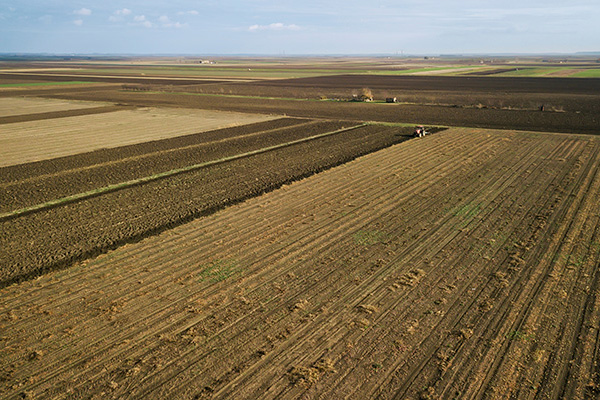Introduction: The Quest for Optimal Cotton Cultivation
For centuries, cotton has adorned our lives, weaving its way into our history, culture, and economy. As one of the world’s most versatile natural fibers, cotton’s exceptional qualities have earned it a place in our wardrobes, homes, and hearts. However, cultivating this prized crop requires careful consideration, particularly when it comes to the soil it thrives in. Join us as we explore the fascinating world of cotton cultivation, discovering the secrets to nurturing vibrant, bountiful cotton fields.

Image: www.taropumps.com
Unveiling the Ideal Soil Profile: A Soil’s Perspective
The ideal soil for cotton cultivation possesses a unique blend of properties that harmonize perfectly with the plant’s growth requirements. Let’s delve into the specific characteristics cotton plants seek in their soil haven:
-
Loamy Soil: A loamy soil is the Holy Grail for cotton production, featuring a balanced blend of sand, silt, and clay particles. This harmonious composition provides excellent drainage while effectively retaining essential moisture, ensuring optimal root growth and nutrient uptake.
-
Well-Drained: Cotton plants abhor waterlogged conditions, and a well-drained soil is paramount for their well-being. Soils with poor drainage suffocate roots, impeding growth and elevating disease susceptibility.
-
Fertile: Cotton, like any high-yielding crop, demands a generous supply of nutrients to flourish. The ideal soil for cotton cultivation is well-fertilized, providing the plant with ample nitrogen, phosphorus, potassium, and micronutrients.
-
pH Balance: Soil pH plays a crucial role in cotton cultivation, impacting nutrient availability and plant growth. A pH ranging from 6.0 to 7.0 offers an ideal environment for cotton plants to thrive.
Delving into Soil Types: Understanding Soil Variations
The vast tapestry of soils presents a diverse range of options, each with its own unique characteristics. Here are the key soil types for cotton cultivation:
-
Clay Soil: As the name suggests, clay-rich soils are dominated by clay particles. While they possess excellent water-retention capabilities, they often suffer from poor drainage, making them less suitable for cotton cultivation.
-
Sandy Soil: Sandy soils, boasting ample sand particles, are the polar opposite of clay soils. Their rapid drainage can lead to nutrient leaching, requiring more frequent and efficient fertilization practices.
-
Silt Loam: The cream of the crop, silt loam strikes an ideal balance between sand, silt, and clay, offering the best of both worlds. Their excellent drainage, water retention, and fertility make them the superior choice for cotton cultivation.
Mending Soil Inadequacies: Embracing Soil Amendments
Certain soils may not inherently meet all the ideal soil requirements for cotton cultivation, but despair not! Soil amendments can come to the rescue, enhancing flawed soil profiles and transforming them into hospitable havens for cotton plants.
-
Adding Organic Matter: Incorporating generous amounts of organic matter, such as peat moss or compost, into soil improves nutrient retention, drainage, and overall soil structure.
-
Adjusting pH: For pH imbalances, amending the soil with agricultural lime or sulfur can restore its pH to the optimal range for cotton growth.
-
Clay Soil Remedies: If clay soil is your bane, implementing measures to enhance drainage, such as raised beds or subsurface drainage systems, can mitigate its limitations.

Image: www.hunker.com
Expert Insights: Unlocking the Secrets of Cotton Cultivation
Let’s tap into the wisdom of experts, whose years of experience cultivating cotton have granted them invaluable insights:
“Fertilization is critical,” emphasizes Dr. Emily Adamczyk, an esteemed cotton agronomist. “Regular soil testing guides us in precisely determining the nutrient needs of each field, ensuring optimal cotton yields.”
“Water management is a delicate art,” adds Professor Daniel Jackson, a renowned expert in cotton physiology. “Maintaining adequate soil moisture during critical growth stages without promoting waterlogging is essential for maximum productivity.”
Empowering You: Practical Tips for Cotton Cultivation
Armed with this expert guidance, let’s explore practical tips to uplift your cotton cultivation ventures:
-
Soil Testing: Regular soil testing serves as a roadmap for fertilization and soil amendment decisions, ensuring your cotton plants receive the precise nutrients they need.
-
Targeted Irrigation: Invest in efficient irrigation systems to maintain optimal soil moisture without overwatering. Drip irrigation or furrow irrigation methods promote targeted water delivery.
-
Balanced Nutrition: Ensure a well-balanced fertilizer program that supplies essential nutrients, particularly nitrogen, phosphorus, and potassium, in appropriate ratios.
Which Soil Is Ideal For Growing Cotton
Conclusion: The Soil, The Seed, The Harvest
In the symphony of agriculture, the soil, the seed, and the harvest interweave in an intricate dance, yielding bountiful harvests and enduring legacies. Understanding the ideal soil for growing cotton empowers you to nurture thriving cotton fields, contributing to sustainable textile production and preserving the intricate tapestry of life. May your cotton cultivation endeavors ignite a passion, deepen your connection with the land, and result in bountiful harvests that clothe the world in comfort and warmth.
